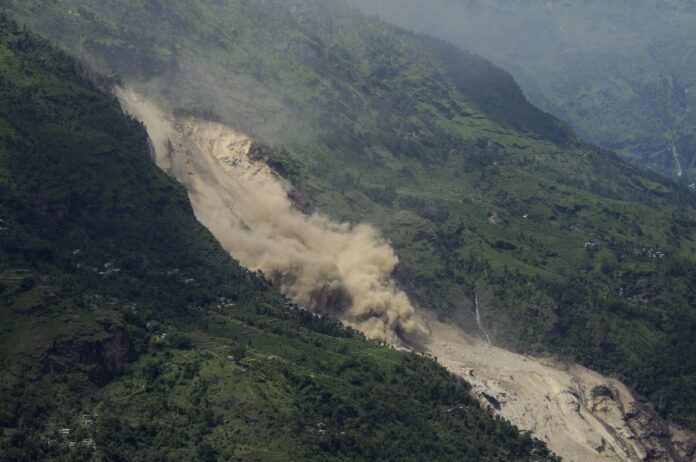A massive landslide near the Indo-China border in Arunachal Pradesh and an encounter resulting in the killing of two Maoists in Odisha have captured headlines, highlighting the challenges and complexities faced by security forces in India’s remote and rugged regions.
The landslide near the Indo-China border in Arunachal Pradesh has sparked concerns about the safety of local residents and the strategic implications for India’s border security. The landslide, triggered by heavy rainfall, occurred in the remote Upper Siang district, engulfing a stretch of the road connecting the villages of Tuting and Gelling. The landslide has disrupted essential transportation routes, hampering access to remote communities and posing logistical challenges for relief efforts.
The incident comes amid heightened tensions along the Indo-China border, where Indian security forces maintain a constant vigilance against incursions and intrusions by Chinese forces. Landslides and natural disasters in such sensitive areas not only pose immediate risks to the lives and livelihoods of local residents but also have broader implications for national security and territorial integrity.
In response to the landslide, local authorities and disaster response teams have mobilized efforts to assess the damage, clear debris, and restore connectivity to affected areas. However, the rugged terrain and inclement weather conditions have posed significant challenges to relief and rescue operations, highlighting the formidable obstacles faced by responders in remote and inaccessible regions.
Meanwhile, in Odisha, security forces have engaged in a fierce encounter with Maoist insurgents, resulting in the death of two Maoist cadres in the Malkangiri district. The encounter, which took place in the dense forests of the Swabhiman Anchal area, underscores the persistent threat posed by left-wing extremism in India’s tribal heartland.
The Maoist insurgency, which has simmered for decades in several states across central and eastern India, continues to pose a significant security challenge for the Indian government. Maoist rebels, also known as Naxalites, operate in remote and inaccessible regions, exploiting grievances related to land rights, tribal autonomy, and socio-economic inequality to fuel their insurgency.
The encounter in Odisha is a reminder of the ongoing efforts by security forces to counter the Maoist threat and restore peace and stability to affected regions. Over the years, security operations and development initiatives have made significant strides in weakening the Maoist insurgency, but sporadic violence and attacks continue to pose a threat to civilians and security personnel alike.
In response to the encounter, senior police officials in Odisha have hailed the bravery and dedication of security forces in confronting the Maoist menace. The successful operation is seen as a testament to the relentless efforts of law enforcement agencies to maintain law and order and uphold the rule of law in the face of armed insurgency and violence.
The afternoon briefing on the landslide in Arunachal Pradesh and the Maoist encounter in Odisha serves as a sobering reminder of the myriad challenges facing India’s security forces in maintaining peace and stability in remote and conflict-affected regions. From natural disasters and border tensions to insurgency and terrorism, the country’s security landscape is characterized by a complex interplay of internal and external threats that demand constant vigilance and resilience.
As India continues to grapple with these challenges, it underscores the importance of robust disaster preparedness, effective law enforcement, and comprehensive counterinsurgency strategies to safeguard the lives and livelihoods of its citizens and protect the nation’s territorial integrity. The afternoon briefing serves as a call to action for policymakers, security forces, and communities alike to work together in addressing these challenges and building a safer and more resilient future for all.




